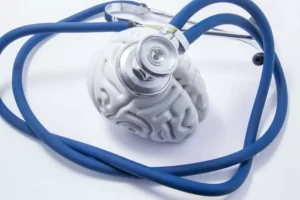
Treatment centers should ideally have rigorous and reliable screening for substance use disorders and related conditions. They should have an integrated treatment approach that addresses other mental and physical health conditions. They should emphasize linking different phases of care, such as connecting patients to mental health professionals, housing, and peer support groups when transitioning out of the acute phase of care.
Alcohol Use Disorder
Repetitive behavior like this can make you more vulnerable to developing alcoholism. The more highly educated an individual is, the more likely they are to consume alcohol. In the United States, 80% of college graduates drink; only 52% of individuals with no college drink. College graduates who drink are 61% more likely to say that they have consumed alcohol within the last 24 hours than non-college graduates who drink. College graduates in the United States strongly prefer wine to beer, and non-college graduates prefer beer to wine. Cultures where drinking is considered shameful may cause alcoholics to hide their condition and avoid treatment due to the stigma of being labeled an alcoholic.
How Alcoholism Risk Factors Affect Treatment And Relapse
- The expectations an individual has about drinking also play a big role.
- The study, which appears in eClinicalMedicine, concludes there is a linear relationship between the amount of alcohol one consumes and the risk of developing dementia.
- In addition to ongoing mental health support, enhancing an individual’s “recovery resources” is also important.
- The fact that not every person who drinks alcohol will necessarily experience a loss of control and progression to addiction indicates that AUD is not solely driven by exposure to alcohol.
Internal factors include genetics, psychological conditions, personality, personal choice, and drinking history. External factors include family, environment, religion, social and cultural norms, age, education, and job status. It is important to remember that AUD is not due to an individual’s lack of self-discipline or resolve. Long-term alcohol use can produce changes in the brain that can cause people to crave alcohol, lose control of their drinking and require greater quantities of alcohol to achieve its desired effects.
- Mild is classified as 2 to 3 symptoms, moderate is classified as 4 to 5 symptoms, and severe is classified as 6 or more symptoms, according to the DSM-5.
- In their attempt to clarify the relationship between light and moderate alcohol consumption and dementia, the authors of the study analyzed data from the UK Biobank for 313,958 white, British drinkers.
- Alcohol use disorder (sometimes called alcoholism) is a common medical condition.
Understanding Alcohol Use Disorder
- Symptoms of alcohol use disorder are based on the behaviors and physical outcomes that occur as a result of alcohol addiction.
- But many people in recovery show improvements in memory and concentration, even within the first month of sobriety.
- This is a statistical technique often used to assess the relationship between a risk factor and health outcome over time.
- Everyday Health follows strict sourcing guidelines to ensure the accuracy of its content, outlined in our editorial policy.
- Alcohol dependence can form quickly and aggressively, or it may surface over a longer period of time.
- This activity reviews the definition and diagnosis of AUD and the available evaluation and evidence-based treatments.
- When you drink too much alcohol, it can throw off the balance of good and bad bacteria in your gut.
Consider starting a symptom journal to keep track of when you experience pain and what might be causing it. Being aware of what’s causing your headaches can be the first step to getting them under control. While headaches in the afternoon (or any time of day) typically aren’t a cause of concern, they can sometimes be a sign of a more serious issue such as a brain tumor, a stroke, meningitis, or encephalitis. In the United States, Headaches cause 112 million sick days each year.
What Are the Types of Treatment for Alcohol Use Disorder?
In some cases, the first step in treating alcohol use disorder is detoxification—experiencing withdrawal in a safe setting with medical professionals. Heavy drinking can fuel changes in the brain—about half of people who meet the criteria for alcoholism show problems with thinking or memory, research suggests. The ability to plan ahead, learn and hold information (like a phone number or shopping list), withhold responses as needed, and work with spatial information (such as using a map) can be affected. Brain structures can shift as well, particularly in the frontal lobes, which are key for planning, making decisions, and regulating emotions. But many people in recovery show improvements in memory and concentration, even within the first month of sobriety. The good news is that most people with AUD can benefit from treatment, which often includes a combination of behavioral treatment, medication, and support.
How do I take care of myself?

They should also have proactive strategies to avoid dropping out, involve the family in treatment, employ qualified and certified staff, and be accredited by an external regulatory organization. The chance of developing any why do people become alcoholics health problem is related to the genetic code we are born with. Just like some people have a greater risk of developing cardiovascular disease or cancer, others have a greater risk of developing an alcohol use disorder.
Does alcohol offer any health benefits?

For example, some with schizophrenia claim that alcohol “quiets” the voices in their head; some with depression claim that alcohol elevates their mood. This is especially common in individuals who have not been diagnosed or who have found that medication creates unpleasant side effects. Additionally, many psychological disorders reduce an individual’s ability to perceive the reality of their drinking or acknowledge risks and warning signs. In fact, the consumption of alcohol by pregnant women is the leading cause of preventable birth defects in the U.S., and it can cause a particular constellation of problems called fetal alcohol syndrome. Women who have alcohol use disorder may benefit from treatment with medications and behavioral therapies, and in general, discontinuation of alcohol consumption during pregnancy improves outcomes for the baby.
Social Factors
Alcohol is the most commonly used substance in the United States, with 84% of people 18 and older reporting lifetime use, according to data from the 2022 National Survey on Drug Use and Health. Alcohol use exists along a spectrum from low risk to alcohol use disorder (AUD). The intervening category, known as risky drinking, https://ecosoberhouse.com/ includes heavy drinking as well as binge drinking.[1] AUD is a chronic disease with significant medical, social, and psychological implications for the patient. AUD in the United States] This large treatment gap allows clinicians to diagnose a prevalent medical condition with devastating health and societal consequences.
- Growing up around family members and close relatives that suffer from alcoholism increases the risk of alcohol abuse for generations to come.
- Alcohol causes the release of dopamine in the ventral tegmental area, which is a part of the reward pathway.
- Starting college or a new job can also make you more susceptible to alcoholism.
- Medically managed withdrawal or detoxification can be safely carried out under medical guidance.
- Headaches that begin in the afternoon aren’t different from other headaches, except for their timing.
What are the risk factors?

Though at-risk and binge drinking can result in a range of adverse consequences, not all people who engage in these kinds of unhealthy alcohol use have alcohol use disorder. Childhood trauma can fuel problematic drinking in adulthood, because the person might use alcohol to cope with feelings of anger, depression, anxiety, loneliness, or grief. Compared to people without a drinking problem, men and women who sought treatment for alcohol addiction had a higher prevalence of childhood trauma, research finds. Furthermore, the greater the abuse or neglect experienced, the more severe their drinking problem was.